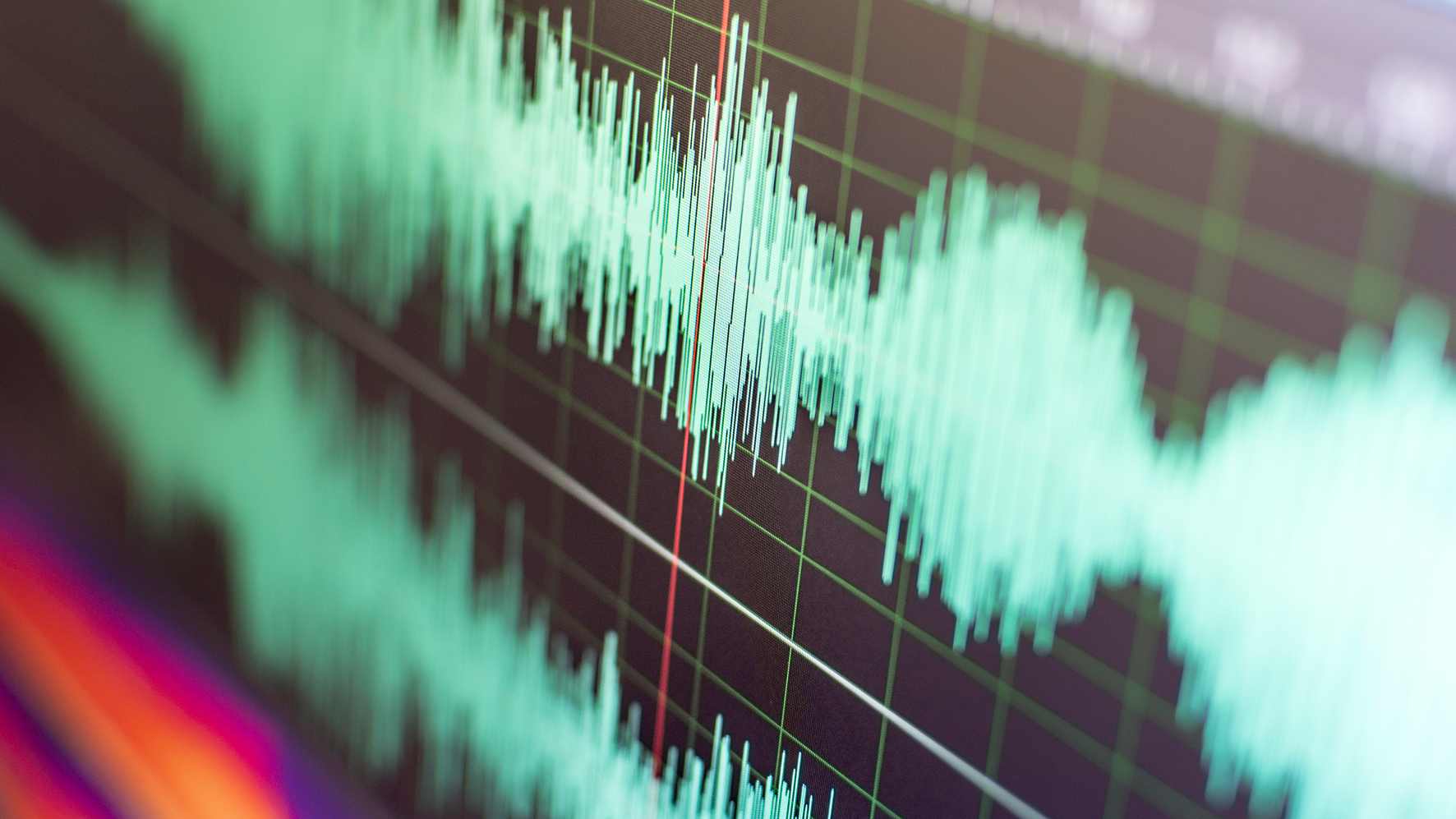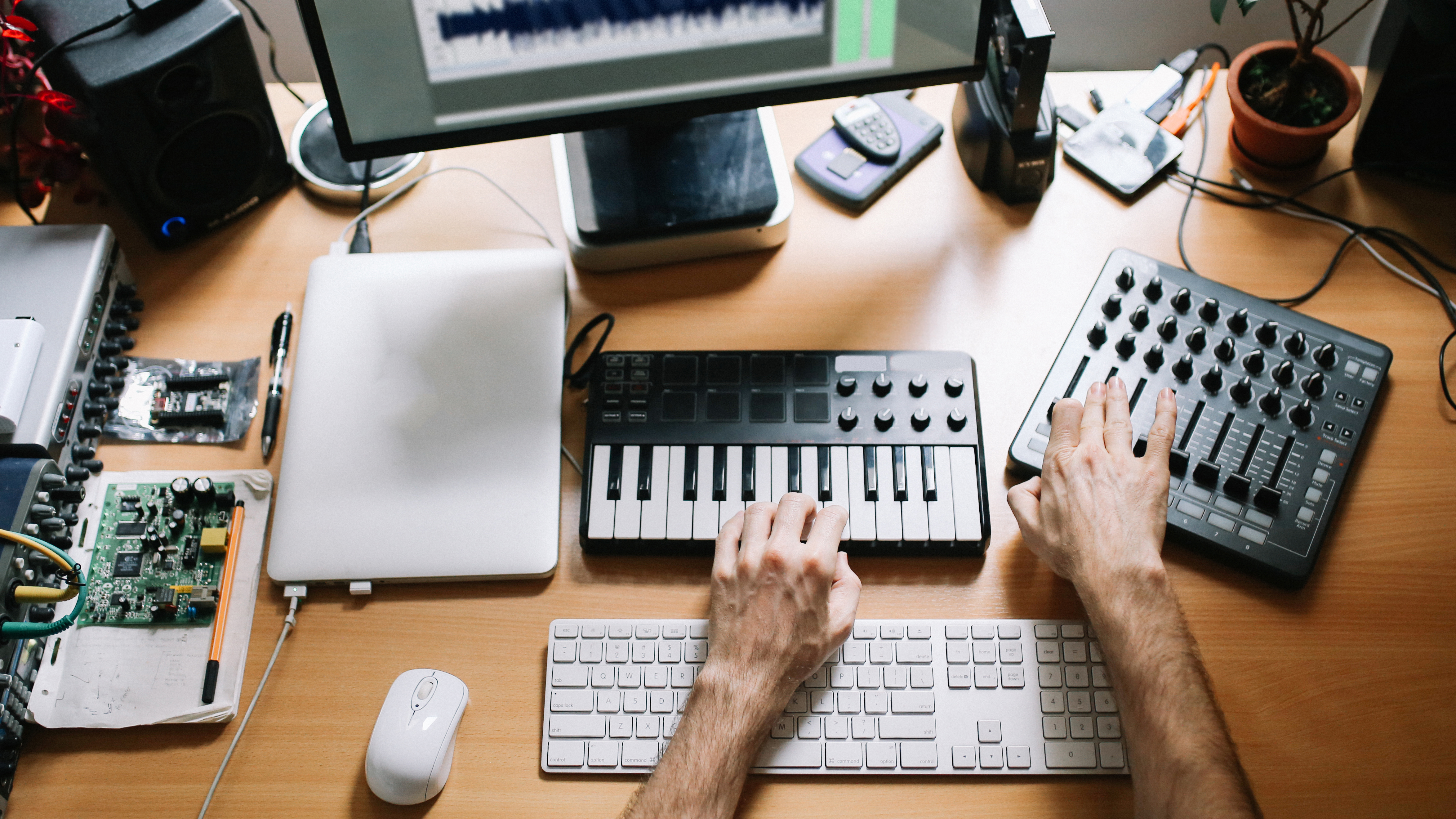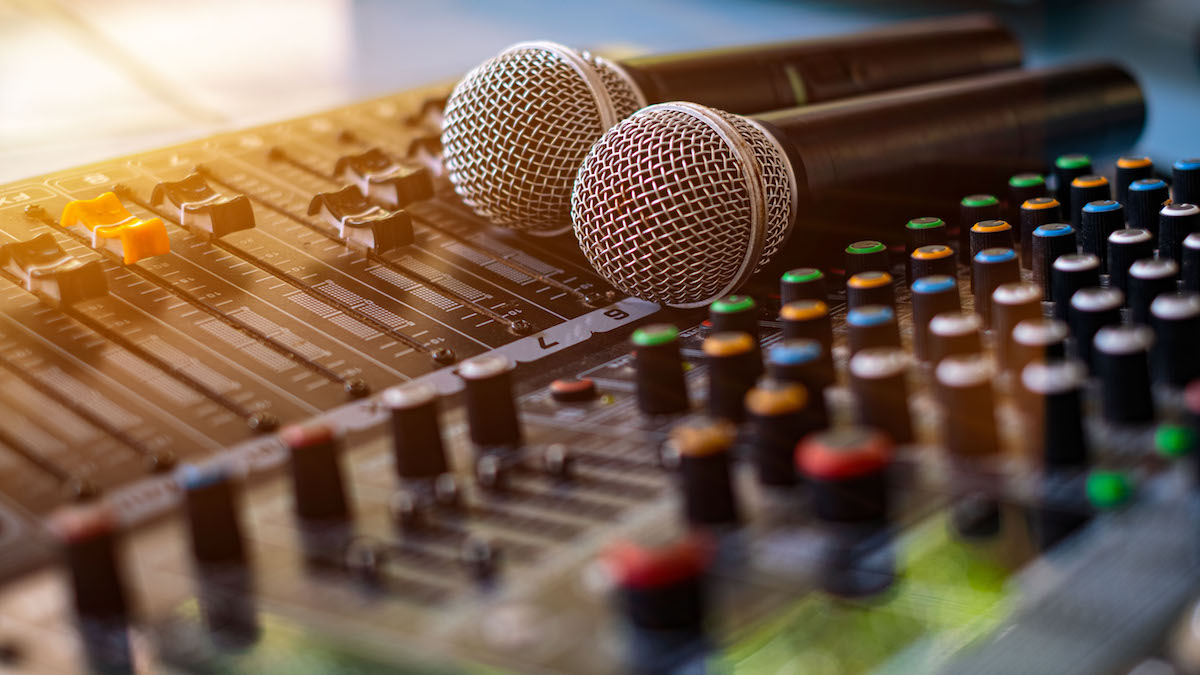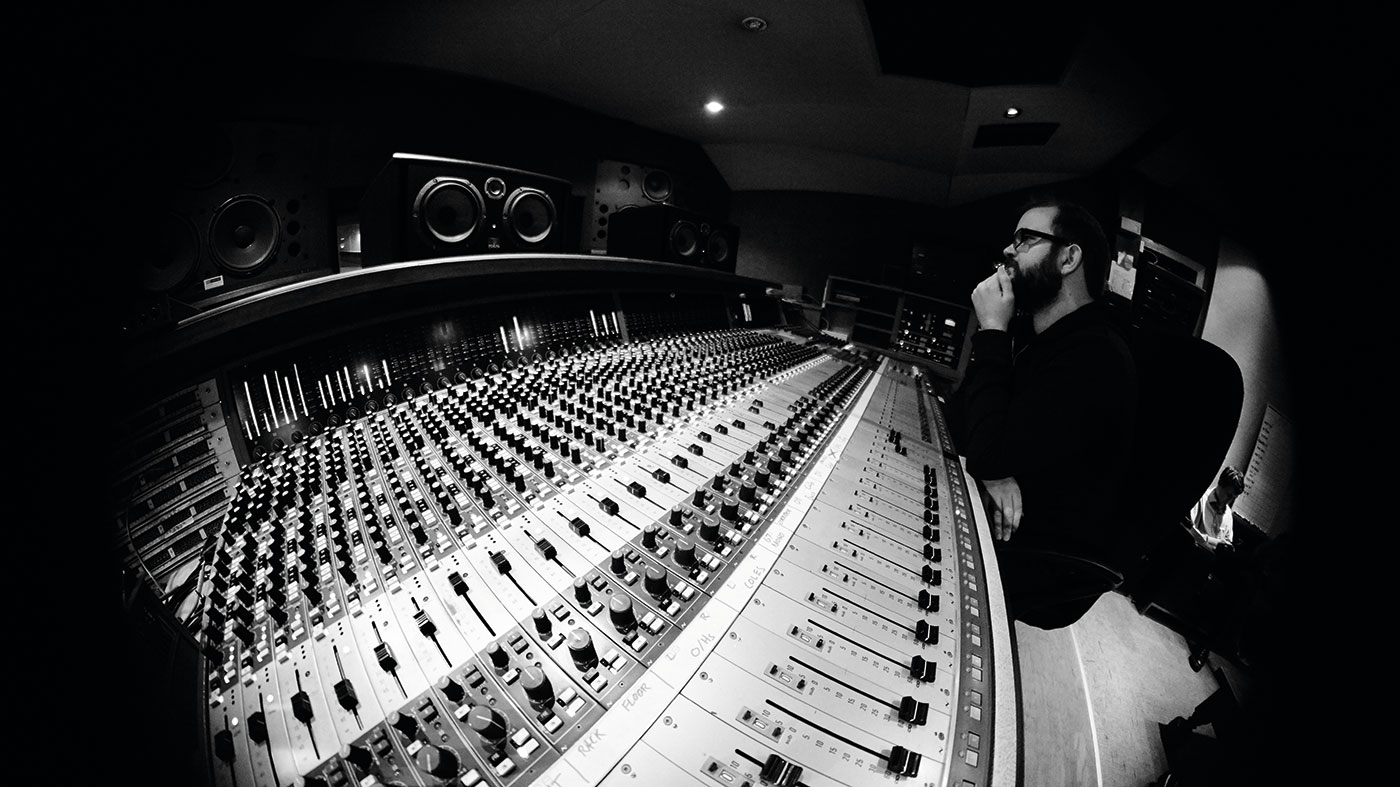How to use referencing and level-matched listening to master your music at home
We guide you through two key stages in the process of mastering in a home studio

There is little doubt that a professionally mastered track will receive more smiles, head nods and foot taps than a track that has no mastering at all.
The roadmap to the best product may seem clear - fill your pockets with your chosen currency and pay a mastering engineer for their expertise and skill. However, due to the high cost of professional mastering, it is not a viable option for most amateur musicians and producers.
The following example of mastering costs against Spotify earnings highlights this disparity. The average cost to professionally master a track is around £250, and Spotify pays artists approximately £0.004 per play. At this rate it would take 62,500 plays to cover the mastering cost of a single song.
Furthermore, any product is only as strong as its weakest link; for the complete package factor in costs for professional mixing, artwork, marketing and a website update; whilst up-scaling your social media presence supported by advertising campaigns. All of this expenditure will need hundreds of thousands of Spotify plays to balance the books.
Are you willing to commit the time and expense to make your product the best it can possibly be with no guarantee of any return? If your aim is to make money to help fund your continued musical journey, then limiting your outgoings by performing tasks yourself will give you the best chance of showing a profit; and mastering is an example of something that you can do yourself, given the right approach and system.
Mastering in a home studio
Today’s musical ecosystem demands a continuous stream of high quality, fresh content. Gain the skills to master at a quality close to professional mastering and you can release tracks at will with zero mastering costs. I feel this must be the goal of any modern home studio owner.
It is time for change; time to relinquish dependency on pro mastering and time to learn the art of mastering in a way that gives you the results you want without sacrificing time spent on the other creative skills you love to use. A fast repeatable system, therefore, is a must - a quick and efficient system that you can build into your daily workflow.
Get the MusicRadar Newsletter
Want all the hottest music and gear news, reviews, deals, features and more, direct to your inbox? Sign up here.
Acceptance is often the moment of clarity that paves the way for growth. Unless you are signed to a major record label or have a huge following of fans, accept that professional mastering is off the radar for now. It is up to you to fill the boots of the pro engineer and maximise profit – you can do it.
The problem is that home studio owners have been left out in the cold with no solid, constructive, complete source of help. I believe independent musicians can achieve masters close to the pros given the right knowledge and approach, which is why I wrote the book Audio Mastering in a Project Studio: A Practical Approach for a Professional Sound.
It seemed that all audio mastering books were aimed at people wanting an insight into professional mastering. None of the information I could find related to a home studio owner releasing a track via a music portal such as CDBaby, Distrokid or Tunecore, for example.
So, I've put together a mastering system that includes only the knowledge and skills you need, not to bamboozle you with text that is irrelevant. In this article I would like to whet your appetite and touch on two key elements of this system, reference mastering and level-matched listening, both of which work hand-in-hand.
Reference mastering
Reference mastering is the act of comparing the track you are working on to that of a commercially released, professional master (known as the ‘reference master’). For best results it is advisable to compare tracks at various stages of a mastering session, i.e. at the start, during and after completion.
How you handle the juggling act of comparing two different sound sources depends on the DAW you are using and any third party plugin you may utilise. Before looking at the options available, let us think for a moment about what needs to happen in order to compare tracks and enact reference mastering.
- One or more reference masters should be available to import into your mastering session
- You will have a method of listening to your own track and your reference master within your mastering session, being able to freely switch between the two as one silences the other. At no time should both tracks be heard simultaneously
- If your reference master is imported onto a track within your mastering session rather than being controlled by a plugin, all plugins on the master buss must be active when listening to your track and deactivated when listening to the reference master
There are some great plugins that will automate this process for you, a couple that come to mind are ‘Magic AB’ by Sample Magic and ‘Reference’ by Mastering the Mix. This is not a recommendation for either, please do your own research and try demonstration versions before you buy if you go this route.
Personally, I do not use a plugin at all. My DAW of choice is Reaper and if you use Reaper too, here is how to automate the process saving the cost of a plugin. This process will be similar in other DAW’s, but the terms used will vary – a great excuse to look up your own DAW methodology and get to know your DAW manual better!
Step 1: Import the professional reference master that you want to compare to ‘track 1’ of your mastering session.
Step 2: Set the status of ‘track 1’ to ‘mute’.
Step 3: Import the song you wish to master to ‘track 2’.
Step 4: Click on the ‘Actions’ menu along the top of Reaper and then select the ‘show action list…’ function.
Step 5: Within the ‘Actions’ popup box locate the ‘custom actions’ section and click on ‘New’ to create a new custom action. A ‘Create Custom Action’ box will appear allowing you to drag any combination of actions from the list on the left to the empty box on the right.
Step 6: Within the search ‘Filter’ box type ‘Track: Select track 1’. This will find the required action. Locate and drag the action ‘Track: Select track 1’ into the empty box to the right.
Step 7: Then type ‘Track: Toggle FX bypass for master track’ in the ‘Filter’ box. Locate the action named ‘Track: Toggle FX bypass for master track’ and drag it to the box on the right.
Step 8: Now type ‘Track: Toggle solo for the selected tracks’ in the ‘Filter’ box and locate the corresponding action, dragging it to the box on the right.
Step 9: Next locate the ‘Custom action name’ box and name the custom action, for example, ‘Reference Masters’ and click the OK button.
Step 10: Finally, locate the newly created custom action in the ‘Description’ list and attach a keyboard shortcut by locating the ‘Shortcuts for selected action’ box on the bottom left, clicking the ‘Add’ button and assign a keyboard shortcut. Click OK to confirm and close the ‘Actions’ box.

You have now created a reference mastering custom action. Press play and you will hear the track you are mastering, then whenever you press the assigned keyboard key, Reaper will instantly select and solo track 1 (your reference master) whilst bypassing the master buss plugins.
Be careful if you have a plugin on your master buss that reduces monitor level drastically, for example, a gain plugin. Using your reference mastering custom action will disable any such plugin and raise the level instantly to the pre plugin state. Consider moving these types of plugins within the ‘FX: Monitoring chain’.
The above method has one major advantage over a plugin – flexibility. Mastering references are placed onto a track within your DAW, so you can import as many as you like with full control over them all.
Try setting up a mastering session template that contains all your reference masters on one track. Having the references in one long line will allow you to slide your soon to be mastered mix along the timeline to find the best reference match.
Whether you are switching between sources manually or you purchase a plugin to control the process, you now have a method of switching between your track and your reference master or masters. Great - but hold on, music sounds different to our ears depending on the level that it is played back at!
This phenomenon was first researched by Fletcher and Munson in 1933 and is depicted by ‘equal loudness curves’, all of which is beyond the scope of this article, but the upshot of these findings means that for us to properly judge the quality of two musical pieces, both must be replayed at the same perceived level, which brings us to the subject of level-matched listening.
Level-matched listening
It is crucial when reference mastering to level-match each track. The idea is simple - all audio should play at the same perceived level in order to provide an equal playing field and a consistent perspective.
However, this process is often overlooked and rarely adhered to all of the time, yet it is so vitally important because small increments of change in level have a big impact on perception. You may have heard stories of audio engineers being fooled by tiny changes in level alone; tales of blind tests where an individual will say master A sounds much better than master B when the only difference between the two is a tiny uplift in level.
Indeed, a change in level is the first tool plugin designers use to convince the end user that there is some ‘voodoo magic’ within the plugin. If you hear someone say “hey, I love this plugin. I insert it, turn it on and without doing anything my source sounds better”. The reality is that the plugin is probably making the source slightly louder.
Level-match the output of the pre and post plugin signal and the truth will be revealed. Louder is perceived as better, and this concept is not exclusive to the level of complete mixes or masters. Changing any aspect of a track that increases level will be perceived as better, equalisation being a prime example and a key process in mastering.
So, if the processes you are using during mastering increase level, there has to be a level matching corrective stage to reveal the truth, otherwise the louder ‘wet’ version of the same source will generally sound better, but in fact may be worse! Level-matched listening is the answer, therefore, and has multiple benefits:
- You will no longer be fooled by louder commercial masters so you can make better decisions
- You will no longer have to juggle playback levels when comparing tracks
- You will hear your master alongside other musical works in a similar fashion to that of a streaming website – the final destination for the majority of songs
To implement this technique within a home studio you have to adjust all audio so that it plays back at the same perceived loudness. The easiest, but least accurate option is to simply use the built-in loudness meters that you were born with - your ears, and balance them by instinct alone. Personally, I prefer something a little more scientific, so let us look at the facts.
Modern streaming and audio hosting websites use a calculation called ‘integrated loudness’ to balance every track equally, so it makes sense to use this measurement. However, the integrated loudness of a piece of music is derived from the complete work from start to finish taking into account psychoacoustic properties and other technical matters.

There is one obvious problem here; to gain a true integrated loudness figure the track should be played in its entirety from start to finish - not ideal in today’s lightning fast world. The best solution is to use an ‘offline’ loudness meter to calculate and return the ‘integrated loudness’. Offline means the plugin can work its magic in super fast time without actually playing the track.
Simply locate the musical file and load, or drag and drop to the plugin GUI and the ‘integrated loudness’ figure will appear in moments! One such drag and drop ‘offline’ plugin is the HOFA 4U Meter, again, an example not a recommendation, please do your own research and find your own best fit.
Another less accurate solution is to simply play the loudest part of a reference master through a VU, RMS or K-Meter and adjust the clip gain output to your desired level. This prompts the question - which level and which meter is best? To be honest, for our purposes there is not a world of difference between the measurements returned by a VU, RMS, K or Loudness Meter.
All these type of meters are more akin to how the ear hears music, as opposed to a peak meter which simply returns the loudest point at any one time. Play a track through each and the results will be similar. For the purpose of level-matched listening, it matters not which you choose. The important point is that you choose one measurement tool and stick to it for all calculations so that consistency is preserved.
I suggest the level that all your music is adjusted to is -14 LUFS; this being the best average of all streaming websites. The process is as easy as measuring a piece of music to ascertain its current integrated loudness and then increasing or decreasing the clip gain so that the music then plays with an integrated loudness of -14 LUFS.

For example, measuring the integrated loudness of ‘Billie Jean’ by Michael Jackson returns an integrated loudness of -10.4 LUFS using the HOFA 4U Meter. When lowering the clip gain by -3.6 db and re-measuring the song, the integrated loudness has changed to -14 LUFS, which is perfect for our studio benchmark.
Try the same exercise with your chosen reference master. Start with one level-matched track playing with an integrated loudness of -14 LUFS (-14 dbfs if you cannot measure loudness units) and build up a library of many. I have a ‘Top 50’ references that I refer to.
If you too analyse as many as fifty, you will soon see that there is an incredible variation in all shapes, sizes, textures and levels of masters. This is extremely liberating! All you need to do is fit in amongst them whilst being sympathetic to your musical vision.
Go ahead and grab some of your top tunes and level match them. Sit back in wonder as they all play at the same level. Set up a dedicated folder on your computer to build your ‘reference masters’ library. Import the level-matched references into your next mastering session, using your chosen method of comparing tracks, and master away – you can do it!
You may be surprised how close your mix is to a finished master and how little mastering you actually need to do once you place your work in the true light of level-matched reference mastering!
In this article, I have briefly skimmed the surface of two key ideals for mastering in a home studio.
In my book, Audio Mastering in a Project Studio: A Practical Approach for a Professional Sound, I present a complete and easy-to-follow mastering system that includes practical guidance and real-world examples aimed at improving the mastering ability of any individual, no matter what level of experience, knowledge or musical genre.
Audio Mastering in a Project Studio: A Practical Approach for a Professional Sound is published by Inform, Inspire Publishing and is available now from Amazon in the UK and US.
Simon Taylor is a British music creator and educator. He is the co-author of the best-selling music production book Template Mixing and Mastering with mix engineer Billy Decker. Simon has been an active member of the music industry for over twenty years as a songwriter, mix/mastering engineer, as well as providing private tuition to the next generation of Chris Lord-Alges and Billy Deckers. He has industry standard qualifications in music technology and advanced recording techniques.
“How daring to have a long intro before he’s even singing. It’s like psychedelic Mozart”: With The Rose Of Laura Nyro, Elton John and Brandi Carlile are paying tribute to both a 'forgotten' songwriter and the lost art of the long song intro
“The verse tricks you into thinking that it’s in a certain key and has this ‘simplistic’ musical language, but then it flips”: Charli XCX’s Brat collaborator Jon Shave on how they created Sympathy Is A Knife









